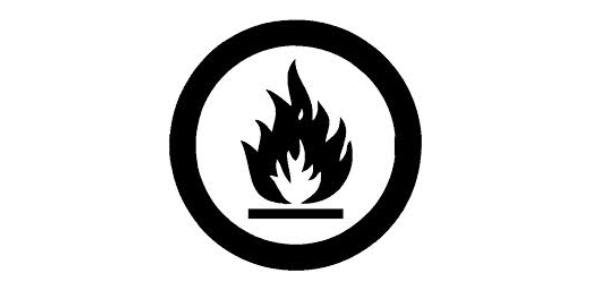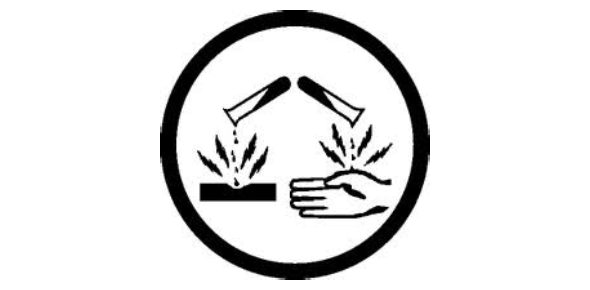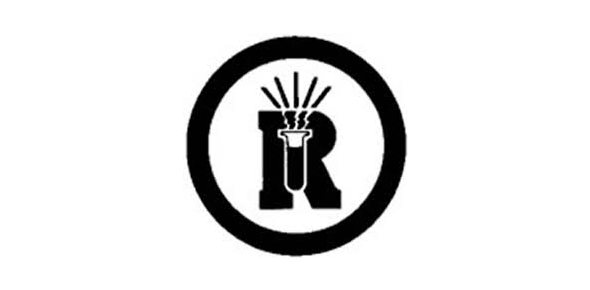WHMIS Hazard Symbols Quiz

- 1.
Heart attacks and/or lung disease are examples of health problems that can result from exposure to hazardous materials?
- A.
True
- B.
False
Correct Answer
A. TrueExplanation
Exposure to hazardous materials can indeed lead to health problems such as heart attacks and lung disease. Hazardous materials, such as chemicals, pollutants, or toxins, can have detrimental effects on the cardiovascular and respiratory systems. These materials can cause inflammation, damage to tissues, and impairment of organ function, ultimately increasing the risk of heart attacks and lung diseases. Therefore, it is important to take necessary precautions and avoid exposure to hazardous materials to protect one's health.Rate this question:
-
- 2.
WHMIS stands for?
- A.
Work Health Management Information Systems
- B.
Worker Health Mind Information Site
- C.
Workplace Hazardous Materials Information System
- D.
None of the above
Correct Answer
C. Workplace Hazardous Materials Information SystemExplanation
WHMIS stands for Workplace Hazardous Materials Information System. This system is designed to provide information about hazardous materials used in the workplace. It includes labeling requirements, safety data sheets, and education and training programs to ensure the safe handling and use of hazardous materials. The purpose of WHMIS is to protect workers from potential hazards and ensure they have the necessary information to work safely with hazardous materials.Rate this question:
-
- 3.
WHMIS has been implemented to:
- A.
Increase workplace hazards
- B.
Eliminate controlled products
- C.
Educate workers and employers to work safely with controlled products
- D.
Introduce workers to the workplace
Correct Answer
C. Educate workers and employers to work safely with controlled productsExplanation
WHMIS, which stands for Workplace Hazardous Materials Information System, has been implemented to educate workers and employers on how to work safely with controlled products. This system provides information about the potential hazards of these products, as well as the necessary precautions to be taken while handling them. By educating individuals about the safe handling and use of controlled products, WHMIS aims to reduce workplace accidents and injuries caused by these hazardous materials.Rate this question:
-
- 4.
How many hazards classes are there?
- A.
1
- B.
3
- C.
5
- D.
6
Correct Answer
D. 6Explanation
There are six hazard classes. Hazard classes are used to categorize different types of hazards based on their characteristics. These classes help in identifying and handling hazardous materials safely. Each hazard class represents a specific type of hazard, such as flammable liquids, corrosive materials, or toxic substances. By classifying hazards into different classes, it becomes easier to communicate and implement appropriate safety measures to mitigate the risks associated with each class.Rate this question:
-
- 5.
How many hazard symbols are there in WHMIS
- A.
1
- B.
4
- C.
8
- D.
20
Correct Answer
C. 8Explanation
There are 8 hazard symbols in WHMIS. These symbols are used to identify and warn about the different types of hazards associated with certain substances or products. Each symbol represents a specific type of hazard, such as flammable, toxic, corrosive, etc. These symbols are important for workers and individuals to recognize and understand the potential dangers and risks associated with the substances they are handling or exposed to.Rate this question:
-
- 6.
A controlled product can severely burn you?
- A.
True
- B.
False
Correct Answer
A. TrueExplanation
A controlled product refers to any substance or product that is regulated by government agencies due to its potential hazards or risks to human health and safety. If a controlled product has the potential to severely burn you, it means that it contains substances or properties that can cause significant burns or damage to the skin or body upon contact or exposure. Therefore, the statement "A controlled product can severely burn you" is true.Rate this question:
-
- 7.
MSDS stands for:
- A.
Manufacturing Service Data Stamp
- B.
Material Safety Data Sheet
- C.
Manufacturing Safety Data Sheet
- D.
Manufacturing Service Data Sheet
Correct Answer
B. Material Safety Data SheetExplanation
MSDS stands for Material Safety Data Sheet. This document provides important information about the potential hazards, handling, storage, and emergency procedures for a particular substance or product. It includes details about the composition of the substance, its physical and chemical properties, and any potential health or environmental risks associated with its use. MSDSs are essential for ensuring the safe handling and use of hazardous materials in various industries, including manufacturing, construction, and healthcare.Rate this question:
-
- 8.
Class A, compressed Gas controlled products should not be stored or placed near heat
- A.
True
- B.
False
Correct Answer
A. TrueExplanation
Compressed gas controlled products can be extremely dangerous if exposed to heat. Heat can cause the gas to expand rapidly, leading to an increase in pressure and potentially causing the container to rupture or explode. Therefore, it is important to store and place these products away from any sources of heat to prevent accidents and ensure safety.Rate this question:
-
- 9.
The WHMIS symbol pictured here is the symbol for:
- A.
Flammable and Combustible Material
- B.
Compressed Gas
- C.
Oxidizing Material
- D.
Poisonous and Infections Materials
Correct Answer
A. Flammable and Combustible MaterialExplanation
The WHMIS symbol pictured here represents Flammable and Combustible Material. This symbol is used to identify substances that can catch fire easily or can contribute to the spread of fire. It is important to be aware of this symbol in order to handle and store such materials safely to prevent accidents and fires.Rate this question:
-
- 10.
The WHMIS symbol pictured here is the symbol for:
- A.
Flammable and Combustible Material
- B.
Compressed Gas
- C.
Corrosive Material
- D.
Oxidizing Material
Correct Answer
C. Corrosive MaterialExplanation
The WHMIS symbol pictured here represents a corrosive material. Corrosive materials are substances that can cause severe damage to living tissue or other materials through chemical reactions. This symbol is used to warn individuals about the potential hazards associated with corrosive materials and to ensure proper handling and storage procedures are followed to prevent accidents or injuries.Rate this question:
-
- 11.
The WHMIS symbol pictured here is the symbol for:
- A.
Oxidizing Material
- B.
Compressed Gas
- C.
Dangerously Reative
- D.
Flammable and Combustible
Correct Answer
C. Dangerously ReativeExplanation
The WHMIS symbol pictured here represents the category of Dangerously Reactive. This symbol is used to indicate substances that are capable of reacting vigorously with other substances, resulting in explosions, fires, or the release of toxic gases. It is important to handle these materials with caution and follow proper safety protocols to prevent accidents or harm.Rate this question:
-
- 12.
Class D is separated into how many divisions?
- A.
3
- B.
10
- C.
15
- D.
0
Correct Answer
A. 3Explanation
Class D is separated into three divisions.Rate this question:
-
- 13.
If a controlled product is transferred into a secondary container in the workplace, does a workplace label have to be used?
- A.
Yes
- B.
No
- C.
Not always
- D.
Only if the supervisor requests you to do so
Correct Answer
A. YesExplanation
When a controlled product is transferred into a secondary container in the workplace, a workplace label must be used. This is important to ensure that all employees are aware of the contents of the container and any potential hazards associated with it. The workplace label helps to promote safety and proper handling of the product, reducing the risk of accidents or exposure to harmful substances. Therefore, it is necessary to use a workplace label when transferring a controlled product into a secondary container.Rate this question:
-
- 14.
MSDS have to be available to workers on shifts at all times
- A.
True
- B.
False
Correct Answer
A. TrueExplanation
According to safety regulations, Material Safety Data Sheets (MSDS) must be readily available to workers at all times, including those on different shifts. This ensures that workers have access to important information about hazardous materials they may be working with, such as handling instructions, safety precautions, and emergency procedures. Having MSDS readily available helps to promote a safe working environment and enables workers to make informed decisions regarding their safety. Therefore, the statement "MSDS have to be available to workers on shifts at all times" is true.Rate this question:
-
- 15.
PPE Stands for:
- A.
Personal Practice and Exercise
- B.
Personal Protective Equipment
- C.
Portable Pro-Active Equipment
- D.
Portable Protective Equipment
Correct Answer
B. Personal Protective EquipmentExplanation
PPE stands for Personal Protective Equipment. This refers to protective clothing, helmets, goggles, or other garments or equipment designed to protect the wearer's body from injury or infection. It is used in various industries and occupations to minimize the risk of workplace hazards and ensure the safety of individuals.Rate this question:
-
- 16.
Safety glasses, steel toe boots, face masks and gloves are all types of:
- A.
PPE
- B.
Employer assets
- C.
Fashion accessories
- D.
Employer uniform
Correct Answer
A. PPEExplanation
PPE stands for Personal Protective Equipment, which includes safety glasses, steel toe boots, face masks, and gloves. These items are designed to protect individuals from potential hazards in the workplace, such as flying debris, chemicals, or foot injuries. PPE is an essential requirement in many industries to ensure the safety and well-being of workers. Therefore, the correct answer is PPE.Rate this question:
-
Quiz Review Timeline +
Our quizzes are rigorously reviewed, monitored and continuously updated by our expert board to maintain accuracy, relevance, and timeliness.
-
Current Version
-
Apr 25, 2024Quiz Edited by
ProProfs Editorial Team -
Aug 27, 2014Quiz Created by
Mark
 Back to top
Back to top





